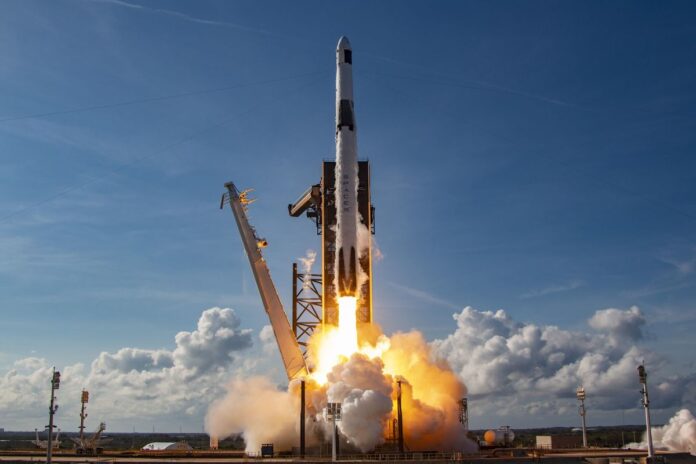SpaceX is all set to launch its latest cargo mission to the International Space Station on Tuesday (March 14), provided Mother Nature cooperates.
NASA and SpaceX held a launch readiness review (LRR) on Monday (March 13) for the company’s CRS-27 resupply flight, which will send a robotic Dragon capsule to the orbiting lab atop a Falcon 9 rocket.
The LRR revealed no pressing issues, so CRS-27 remains on track to launch Tuesday at 8:30 p.m. EDT (0030 GMT on March 14) from NASA’s Kennedy Space Center in Florida.
“The vehicle is healthy, and all the systems are go for launch,” Sarah Walker, SpaceX’s Dragon mission management director, said during a post-LRR press conference on Monday evening. “The main thing that the teams continue to monitor over the next 24 hours is weather.”
You can watch the launch here at Space.com, courtesy of SpaceX and NASA. We’ll also carry footage of Dragon’s ISS rendezvous and docking, which is expected to occur early Thursday morning (March 16).
Related: Facts about SpaceX’s Dragon capsule
The weather is looking good as well, having cleared up quite a bit as Monday wore on.
“Models have definitely trended in our favor,” Arlena Moses, the launch weather officer for Cape Canaveral Space Force Station’s 45th Weather Squadron, said during Monday’s press conference.
“While earlier we were looking at a potential probability of violation around 50%, I can now say that we’re coming down to only 20%,” Moses said.
CRS-27 is so named because it’s the 27th uncrewed mission to the International Space Station that SpaceX will fly under its commercial resupply services contract with NASA.
Dragon will carry up a variety of supplies, hardware and scientific experiments for the ISS crew on CRS-27. Among the science gear is a student-built project that could make it easier to film in space and a Japanese investigation called Tanpopo-5, which “studies the origin, transportation and survival of life in space and on extraterrestrial planets,” NASA officials wrote in an update on Thursday (opens in new tab).
“Dragon will also deliver the final two experiments from the National Institutes for Health and International Space Station National Laboratory’s Tissue Chips in Space (opens in new tab) initiative,” they added. “Both studies, Cardinal Heart 2.0 (opens in new tab) and Engineered Heart Tissues-2 (opens in new tab), use small devices containing living cells that mimic functions of human tissues and organs to advance the development of treatments for cardiac dysfunction.”
Dragon is one of three robotic cargo ships currently servicing the ISS. The other two — Russia’s Progress vehicle and Cygnus, which is built by Virginia-based company Northrop Grumman — are expendable, burning up in Earth’s atmosphere at the end of their missions.
Dragon, however, is designed to survive reentry, haul scientific experiments and other gear back down to Earth, and fly again. CRS-27’s capsule is expected to spend about a month at the ISS before heading home, NASA officials said in Thursday’s update.
CRS-27 will take to the skies less than two weeks after SpaceX’s latest astronaut launch to the ISS, the Crew-6 mission, which lifted off on March 2. SpaceX flies these astronaut missions under a different NASA contract, using Crew Dragon capsules, a different variant than the vehicle that makes robotic resupply flights.
Mike Wall is the author of “Out There (opens in new tab)” (Grand Central Publishing, 2018; illustrated by Karl Tate), a book about the search for alien life. Follow him on Twitter @michaeldwall (opens in new tab). Follow us on Twitter @Spacedotcom (opens in new tab) or on Facebook (opens in new tab).

